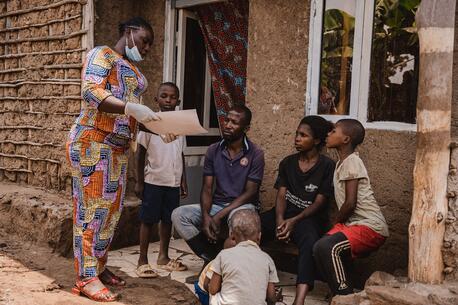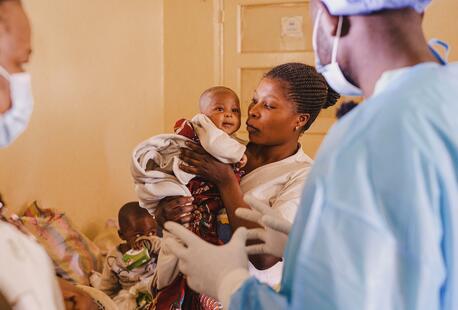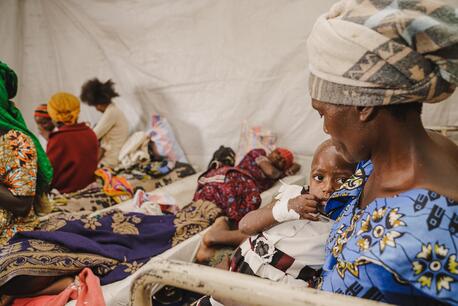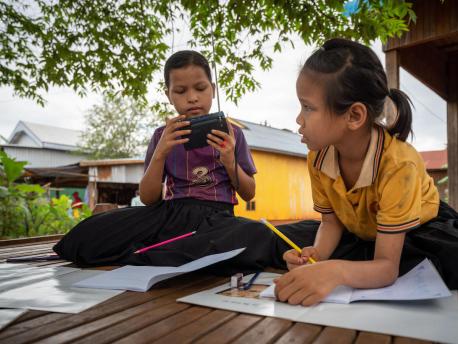
Core Resources Help UNICEF Achieve the Greatest Impact for Children
Vital unrestricted funding allows UNICEF to pioneer new solutions, take innovations to scale and respond rapidly to emergencies.
Flexible funds are critical to UNICEF's mission
Today's headlines are filled with breaking news stories on humanitarian crises around the world: the COVID-19 pandemic, a changing climate, conflict zones, food insecurity. Meanwhile, silent emergencies not visible in the headlines continue to affect the lives and futures of millions of children.
To meet these challenges year in and year out, UNICEF relies on Core Resources for Results — flexible funds that can be used wherever they will have the greatest impact for children. Also known as regular resources, this vital, unrestricted funding allows UNICEF to pioneer new solutions and take them to scale, to be agile in adapting to changing contexts and to fill in the gaps between donor-funded initiatives earmarked for particular programs, regions and emergencies.
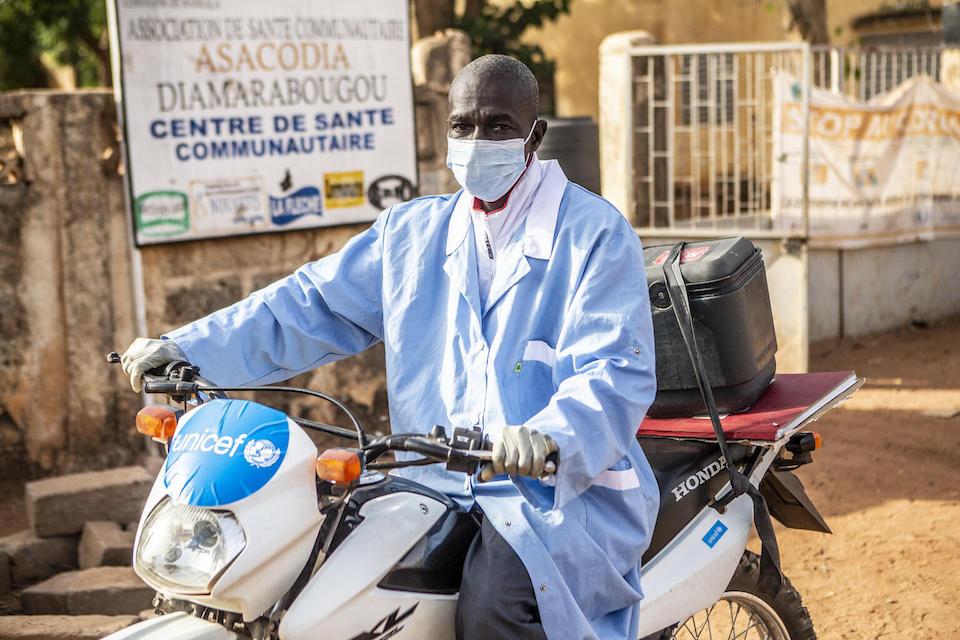
Core resources unlock innovative solutions to complex problems — like solar-powered refrigerators to keep vaccines safe
Core resources fund evidence-based, technologically advanced and game-changing interventions like solar-powered refrigerators, which make it possible for UNICEF to deliver viable vaccines to children in some of the hardest-to-reach places in the world.
The cold chain is a global network of refrigerated storage rooms, freezers and portable cold boxes and carriers that keep vaccines at a controlled temperature from the manufacturing stage to the point of vaccination. In places like Mali where the climate is hot and infrastructure is poor, keeping vaccines refrigerated every step of the way is a challenge, so UNICEF Mali invested in the SOLAR project, installing a network of solar-powered refrigerators to keep vaccines potent and extend the reach of childhood immunization programs into previously inaccessible parts of the country. To date, this sustainable, environmentally friendly initiative has reached over 1,200 villages. This technology is now also being used to store and transport COVID-19 vaccines across the country.
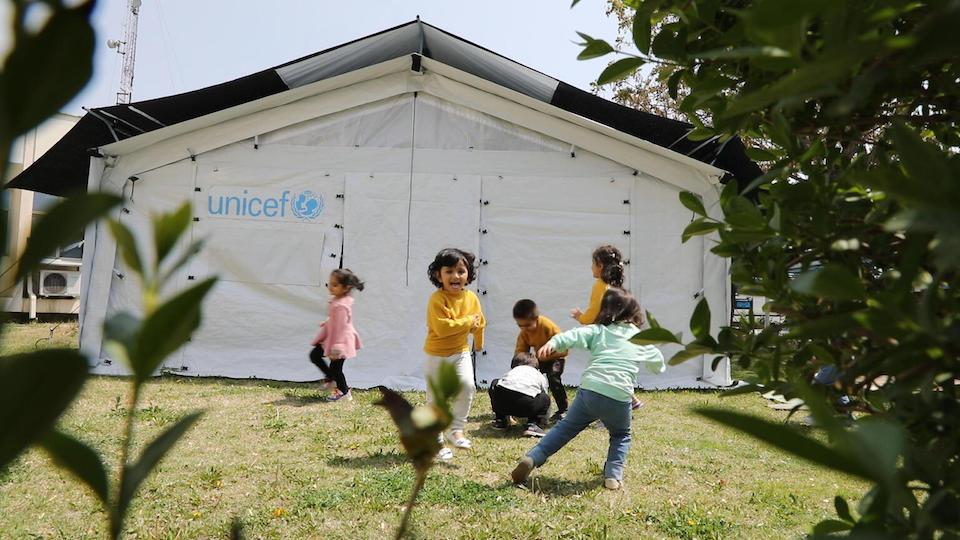
Unearmarked funds take UNICEF’s work to scale — like new high-performance tents for every climate
UNICEF is in a unique position to take innovations to scale, but the process can be complex and costly. Products can take decades to develop before being available for global use and there are many steps along the way, from advocating for a product design to ensuring supply chains are ready for distribution. Unrestricted funding allows UNICEF to continuously innovate and scale solutions to meet the needs of the day, rather than relying on short-term, restricted grants that don’t cover all necessary phases of the process.
The redesign of the classic multipurpose emergency field tent is an example of a resource that has served many purposes in many contexts, from being a temporary classroom to a distribution point for food or medical supplies to a Child-Friendly Space. One thousand technical improvements were made from 11 prototypes and tested in the field in different climates and regions: Uganda for hot and dry, the Philippines for wet and Afghanistan for cold. These tents are now used in a variety of humanitarian situations around the world, protecting children from extreme weather events and conflict, and providing environments for essential services, learning and play.
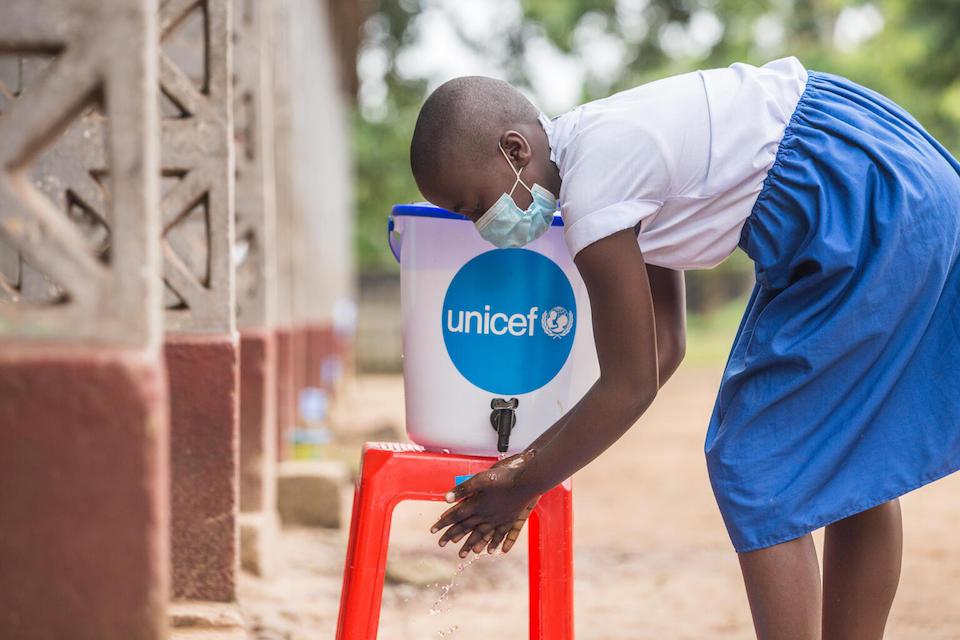
Core resources are the ‘first and last responder’ in emergencies
UNICEF responds to about 300 emergencies every year. With a sustained presence in over 190 countries and territories, UNICEF is there before, during and after emergencies and can quickly determine where funds are needed most. Many times, regular resources become the ‘first responder,’ providing readily available flexible funding up front as fundraising for the emergency begins. Edouard Beigbeder, UNICEF Representative in the Democratic Republic of the Congo (DRC), says “You need to put some readily available and flexible funding up front – the kind that comes from regular resources. In that way, you can immediately show donors what you’re able to do, and the country office can lead the response.”
When UNICEF responded to an Ebola outbreak in the DRC in 2019, UNICEF used regular resources for two to three months before donor funding arrived. The same emergency preparedness was used in March 2020, when COVID-19 emerged — UNICEF DRC used flexible funding to place initial orders for supplies while waiting for donor funds to come in. With UNICEF’s Supply Division’s ability to deliver to anywhere in the world within 72 hours, this allowed workers to respond quickly to needs on the ground.
UNICEF invests in time-tested, evidence-based initiatives
In addition to investments in innovation, taking sustainable solutions to scale and providing fast funds in emergencies, flexible funding is used as a foundation for strategic, long-term programs for children. Twenty percent of UNICEF’s income in 2020 came in the form of regular resources, investing in data collection that will inform sound decision-making, filling critical gaps between donor-funded initiatives and addressing comprehensive needs across sectors to achieve the greatest impact for every child.
Your unrestricted gift helps UNICEF provide children around the world with the innovative, essential programs and services they need to reach their full potential. Please donate.
HOW TO HELP
There are many ways to make a difference
War, famine, poverty, natural disasters — threats to the world's children keep coming. But UNICEF won't stop working to keep children healthy and safe.
UNICEF works in over 190 countries and territories — more places than any other children's organization. UNICEF has the world's largest humanitarian warehouse and, when disaster strikes, can get supplies almost anywhere within 72 hours. Constantly innovating, always advocating for a better world for children, UNICEF works to ensure that every child can grow up healthy, educated, protected and respected.
Would you like to help give all children the opportunity to reach their full potential? There are many ways to get involved.



